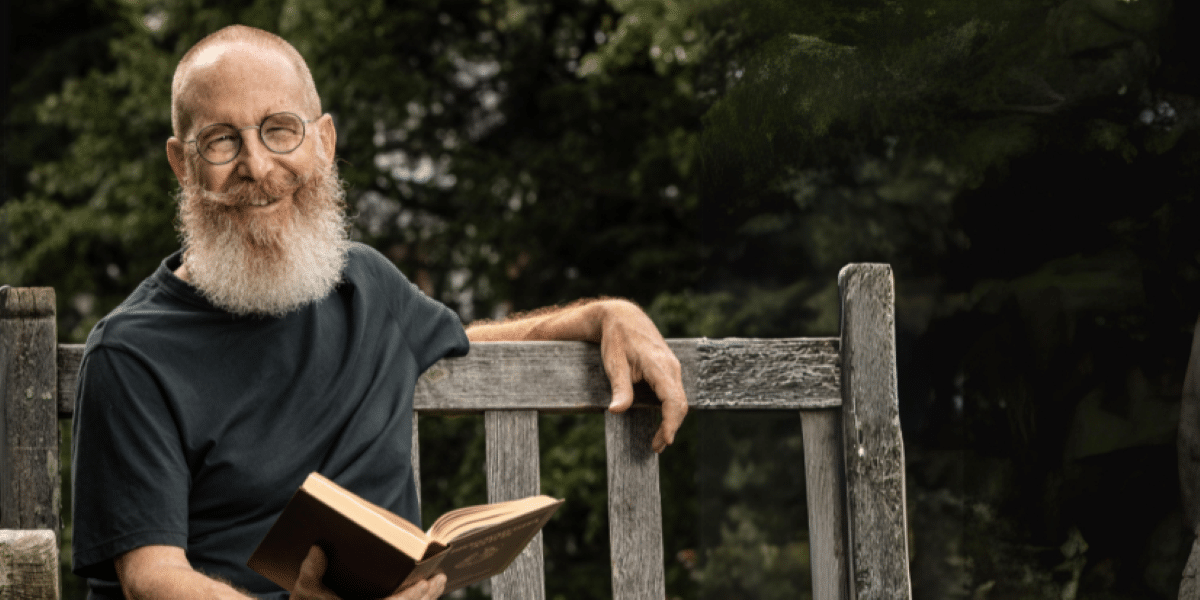By Ananta Ripa Ajmera, Founder, SoulWisdom Press & PR, Co-founder and Director, The Ancient Way
“A clear and concise guide to seeing the modern world through the lens of yoga’s ancient teachings.”
Dive deep into understanding ancient practices that have the ability to heal and transform you with the author, teacher, and spiritual mentor, Hari-kirtana das. Hari is known for his ability to simplify the complex and has done just that in his book “In Search of The Highest Truth: Adventures in Yoga Philosophy” where he has taken the complex subject of yoga philosophy and turned it into a simple yet powerful guide that anyone from seasoned practitioners to curious beginners can implement and understand. Hari’s mission is to illuminate the many ways in which the yoga wisdom tradition can guide us toward meaningfully transformative spiritual experiences.
Hari-kirtana das now joins us to reveal his inspiration to provide an easy and entertaining way to immerse readers in the foundations of yoga philosophy.
Why did you write In Search of the Highest Truth?
I wrote In Search of the Highest Truth because I saw there was a need. I’d been teaching yoga philosophy in workshops and teacher trainings for several years, and over and over again, students came to me asking for a good book to learn about yoga philosophy in a very general way. These were people who had demonstrated a real enthusiasm and desire to understand yoga on a deeper level, on a philosophical level, on a metaphysical level and were frustrated because there were books written for an academic audience and books written about contemporary interpretations of yoga philosophy, but none that presented the traditional yoga wisdom texts in a way that was accessible and relevant. So, after a few years of hearing this, I decided to write the book myself.
What makes In Search of the Highest Truth different from other books about yoga philosophy?
What makes In Search of the Highest Truth different from other books about yoga philosophy is that it covers a lot of deep material in a very accessible way. Most of the book takes the form of conversations. The conversations are transcripts of talks I gave at yoga teacher training programs, and there’s a lot of Q&A between me and the students.
Readers tell me that they really like that the students in the book’s conversations ask many of the same questions that they’ve been asking. So the reader feels like they’re taking part in a conversation and hearing their questions asked and answered, rather than reading something that creates distance between them and the subject matter.
How’s this book going to make it easier for someone to understand a traditional yoga wisdom text, like, for example, the Yoga Sutras?
The way In Search of the Highest Truth will help a reader to get more out of a traditional yoga wisdom text, like the Yoga Sutras in particular, or the Bhagavad Gita, is that In Search of the Highest Truth introduces the reader to some of the fundamental concepts of yoga in a clear, concise, and relatable way.
What’s the biggest challenge to understanding traditional yoga philosophy? And how does your book help overcome it?
The biggest challenge to understanding traditional yoga philosophy is that it is in many ways diametrically opposed to modern assumptions that we take for granted.
For instance, yoga wisdom texts tell us that we are not created beings: we are eternal. And to be eternal means to have never come into being. Yoga wisdom literature describes us the atma, the purusha, the self as eternal, having never come into being, with no possibility of ever going out of being.
This is very different from the modern assumption that we come into being at a point of time when there’s a chance combination of material elements that produces this body. And if we had a religious upbringing in a monotheistic tradition, we might have heard that God creates us at a point in time: at conception or shortly thereafter. Well, what we hear from yoga wisdom texts is that we were somewhere before we came here, and somewhere before that, and somewhere before that.
This idea of the eternal soul transmigrating from one body to another in one lifetime after another is actually a very radical idea that can be really challenging. So it gives you an idea of how a modern worldview coming to a traditional yoga wisdom text would have to make a pretty big change of mindset in order to enter into the world of that yoga wisdom text.
By pointing out and discussing underlying assumptions like this, In Search of the Highest Truth gives readers an opportunity to look at the world through the lens that yoga philosophy gives us rather than look at yoga philosophy through the lens that the world gives us. And if we look at the world through the lens that yoga wisdom is offering us, what we’ll see is something very, very different than what we’re accustomed to and something very revelatory.
How can readers get the most benefit from this book?
Readers can get the most benefit from this book by applying whatever they learn from it in their lives. The yoga wisdom tradition tells us that there are two kinds of knowledge: book knowledge and experiential knowledge, also known as jñāna and vijñāna. Book knowledge is a nice benefit to have. However turning book knowledge into experiential knowledge offers a deeper level of knowledge because it offers an opportunity for personal transformation.
You can learn more about Hari-kirtanta das here and find his book on Amazon.
Published by Khy Talara

















